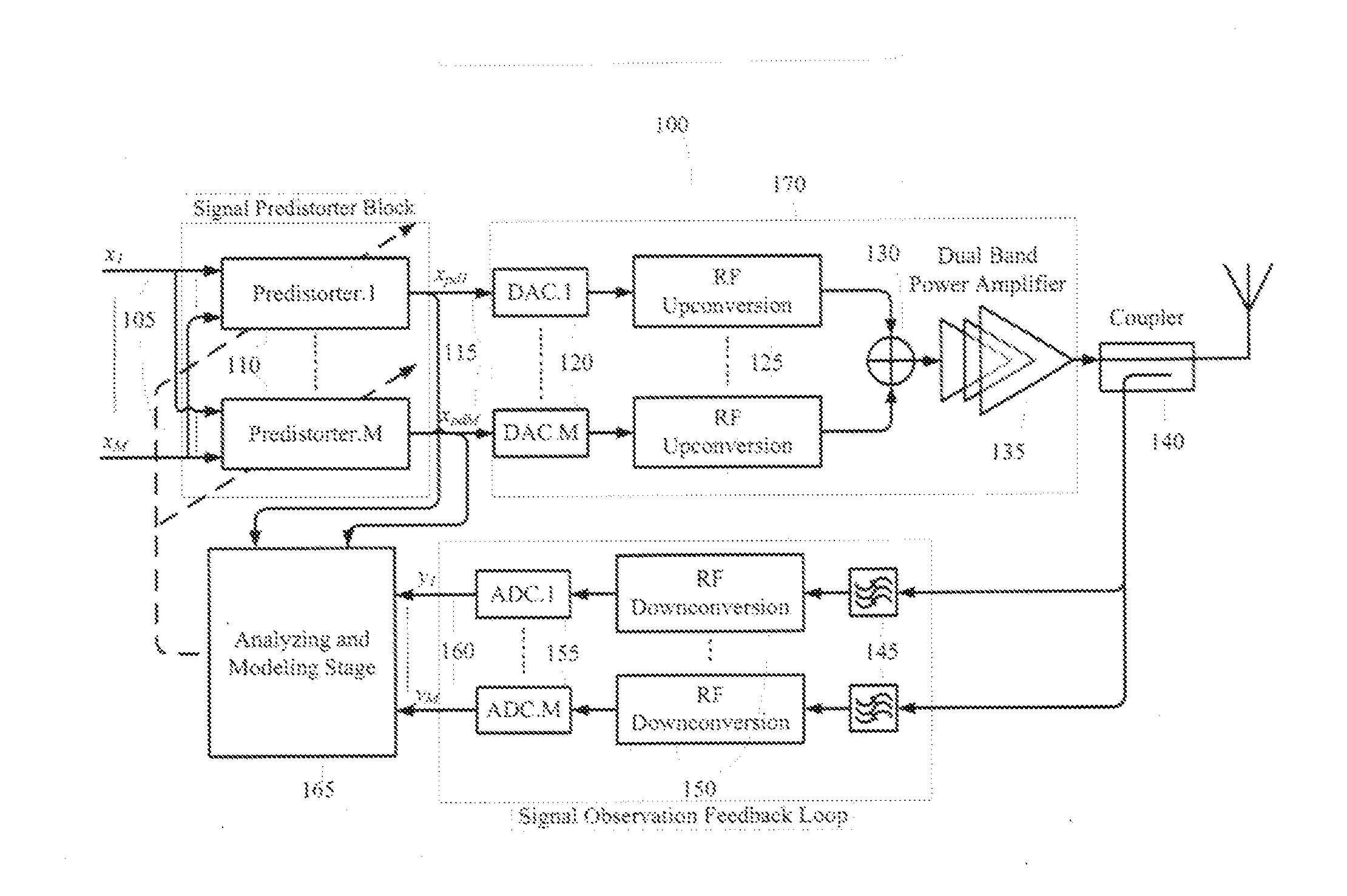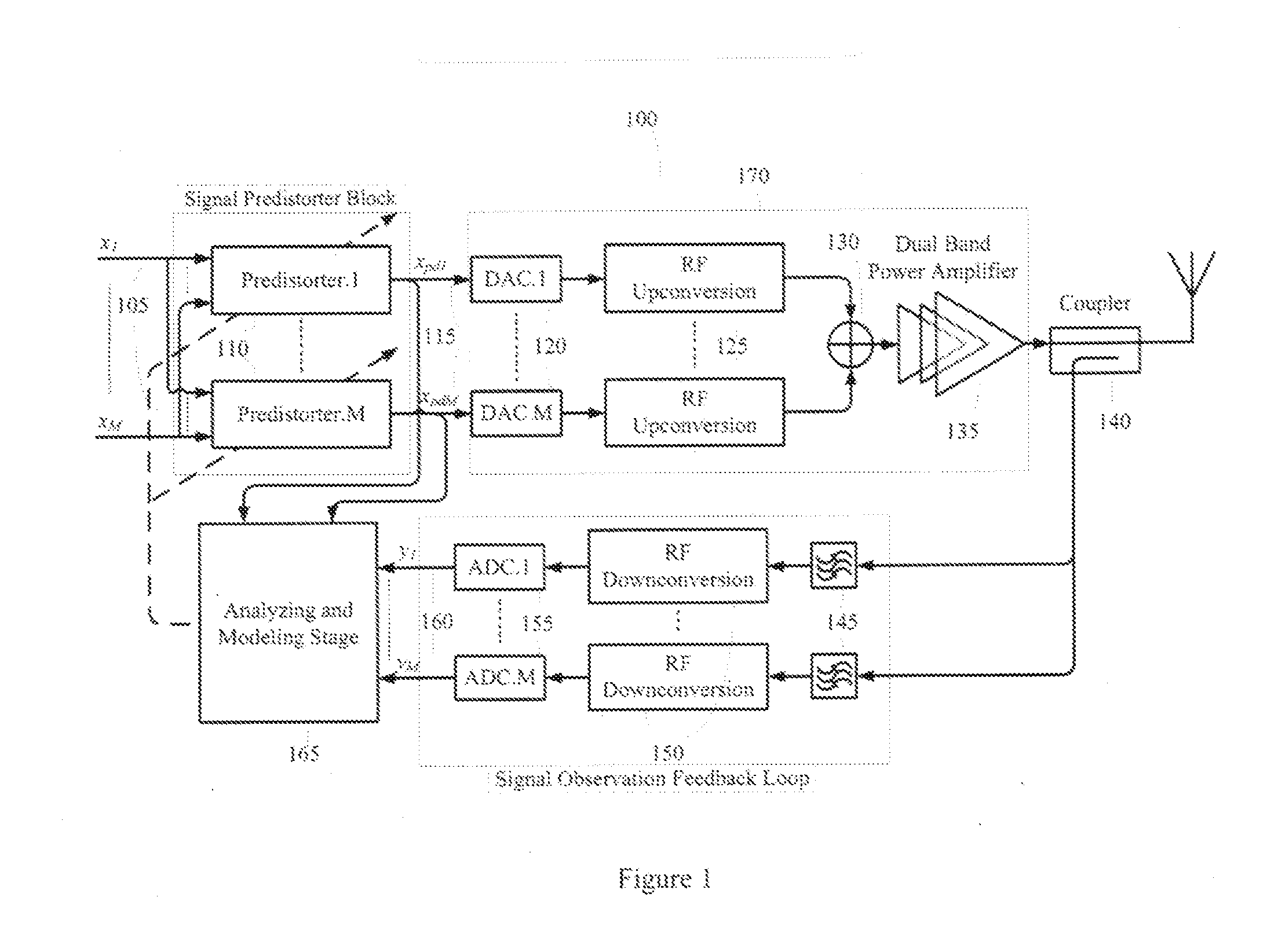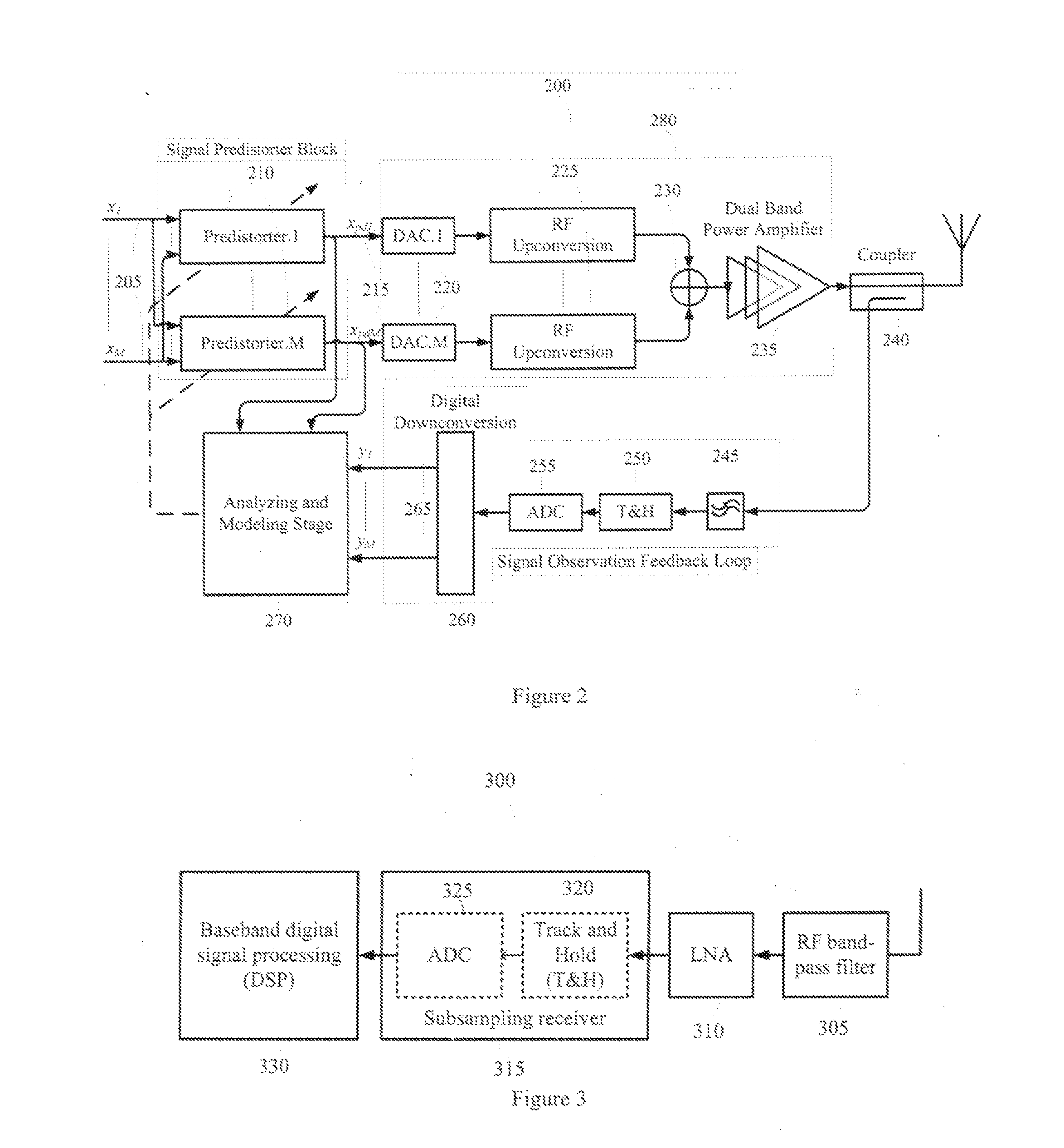Digital Multi-band Predistortion Linearizer with Nonlinear Subsampling Algorithm in the Feedback Loop
- Summary
- Abstract
- Description
- Claims
- Application Information
AI Technical Summary
Benefits of technology
Problems solved by technology
Method used
Image
Examples
Embodiment Construction
[0030]The following description of the preferred embodiment(s) is merely exemplary in nature and is in no way intended to limit the invention, its application, or uses.
[0031]Broadly, an embodiment of the present invention provides multiple branch digital predistortion linearization architecture and digital signal processing algorithms for impairments-free operation and linearized multi-band transmitter.
[0032]Referring to FIG. 1, the system block diagram of the dual-band linearization architecture100 is displayed. The input signals, x1 and x2, 105 are fed into two distinct predistorters blocks 110. The predistorted signals 115 are converted from digital to analog 120 and up-converted 125 to RF frequencies. Then the two RF signals are combined 130 and amplified by the power amplifier 135.
[0033]For digital predistortion linearization and identify the inverse model, the sample of the RF signal are captured using dual-band coupler 140. Then the RF signals are bandpass filtered 145, frequ...
PUM
 Login to View More
Login to View More Abstract
Description
Claims
Application Information
 Login to View More
Login to View More - R&D
- Intellectual Property
- Life Sciences
- Materials
- Tech Scout
- Unparalleled Data Quality
- Higher Quality Content
- 60% Fewer Hallucinations
Browse by: Latest US Patents, China's latest patents, Technical Efficacy Thesaurus, Application Domain, Technology Topic, Popular Technical Reports.
© 2025 PatSnap. All rights reserved.Legal|Privacy policy|Modern Slavery Act Transparency Statement|Sitemap|About US| Contact US: help@patsnap.com



